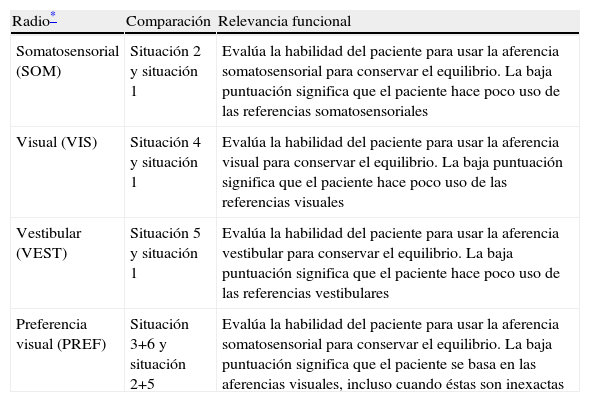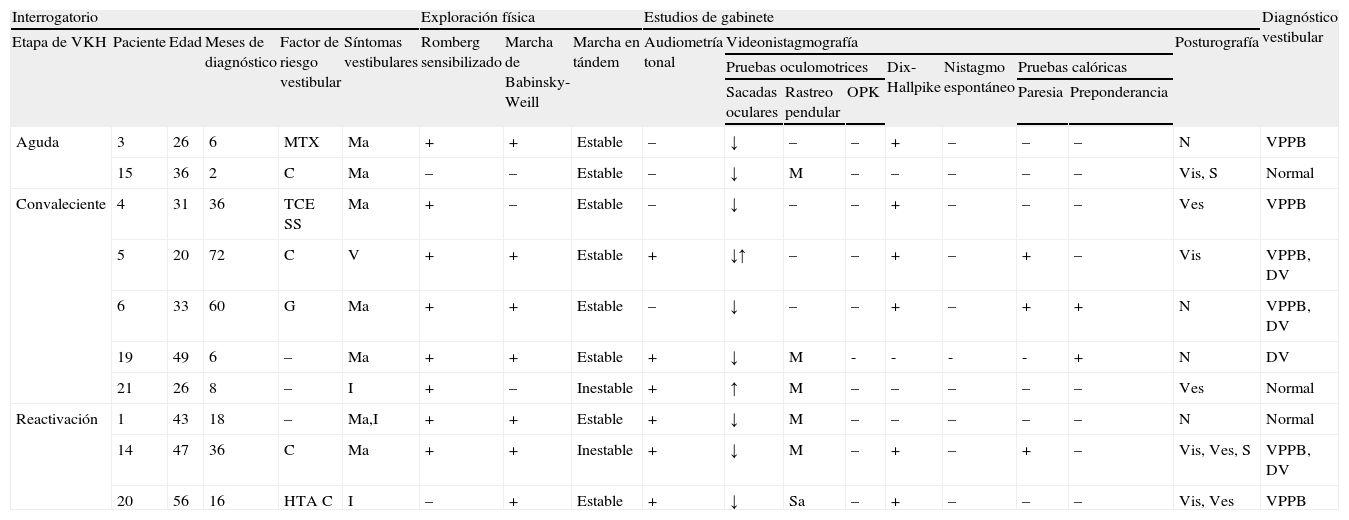Identificar y describir alteraciones vestibulares en pacientes con síndrome de Vogt-Koyanagi-Harada (VKH).
Material y métodoEstudio prospectivo, transversal, observacional y descriptivo. Se interrogó y exploró físicamente a pacientes con VKH referidos de un centro oftalmológico, en busca de datos de alteración vestibular. De ser positiva, se les realizó videonistagmografía, posturografía dinámica computarizada, audiometría tonal y timpanometría.
ResultadosDe 21 pacientes con VKH, sólo se incluyeron a 10 por presentar datos de alteración vestibular (10/10 con síntomas vestibulares, 9/10 con alteraciones en la exploración física). Media de edad, 37,8 años. Videonistagmografía principalmente alterada en prueba de sacadas oculares (10/10). Posturografía con mayor alteración de las aferencias visual (4/10) y vestibular (4/10). Se concluyó mayoritariamente el diagnóstico de vértigo postural paroxístico benigno (6/10). Ninguno presentó alteración del oído medio ni datos de afección central; 6/10 tuvieron alteraciones en la audiometría tonal.
ConclusionesLa población con VKH frecuentemente sufre afección vestibular periférica.
To identify and describe vestibular abnormalities in patients with Vogt-Koyanagi-Harada syndrome (VKH).
Materials and methodProspective, cross-sectional, observational and descriptive study. Patients with VKH referred by an ophthalmological center, were interrogated and physically examined in search of signs of vestibular abnormalities, and if positive, they underwent videonystagmography, computerized dynamic posturography, tonal audiometry and tympanometry.
ResultsOut of 21 patients with VKH, only 10 were included in the study due to presenting data of vestibular abnormalities (10/10 with vestibular symptoms and 9/10 with abnormalities in the physical exploration). The age average was 37.8 years. The videonystagmography was mainly abnormal in ocular saccades test (10/10). The posturography showed a higher alteration of the visual (4/10) and vestibular (4/10) afferents. A diagnosis of benign paroxysmal positional vertigo was mostly concluded (6/10). None presented abnormalities of the middle ear nor data of central pathology, 6/10 presented abnormalities in tonal audiometry.
ConclusionsPeripheral vestibular disorder is often present in the population with VKH.
Artículo
Comprando el artículo el PDF del mismo podrá ser descargado
Precio 19,34 €
Comprar ahora









